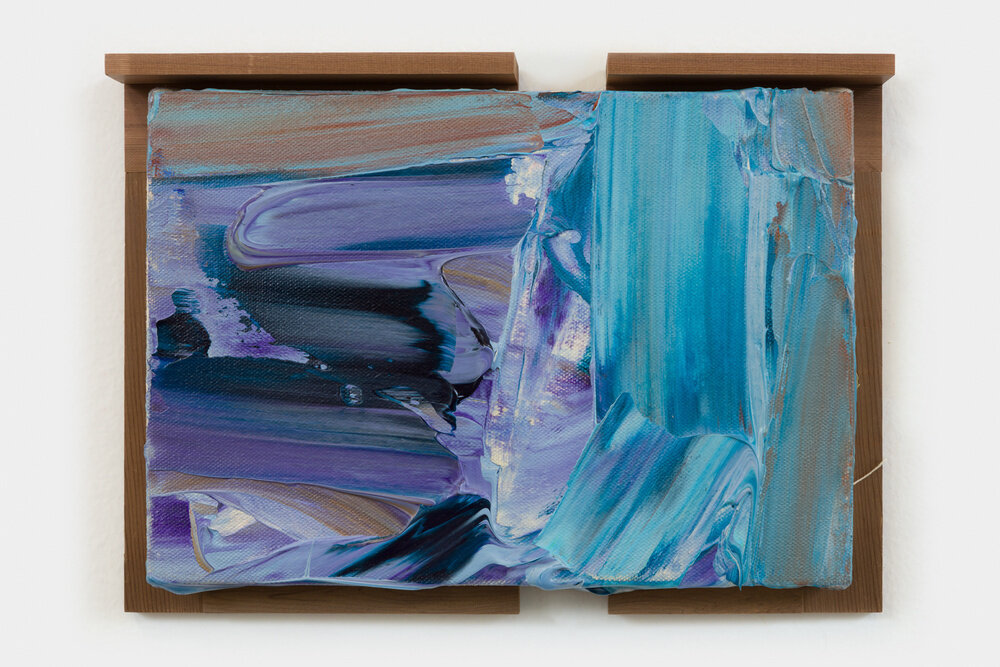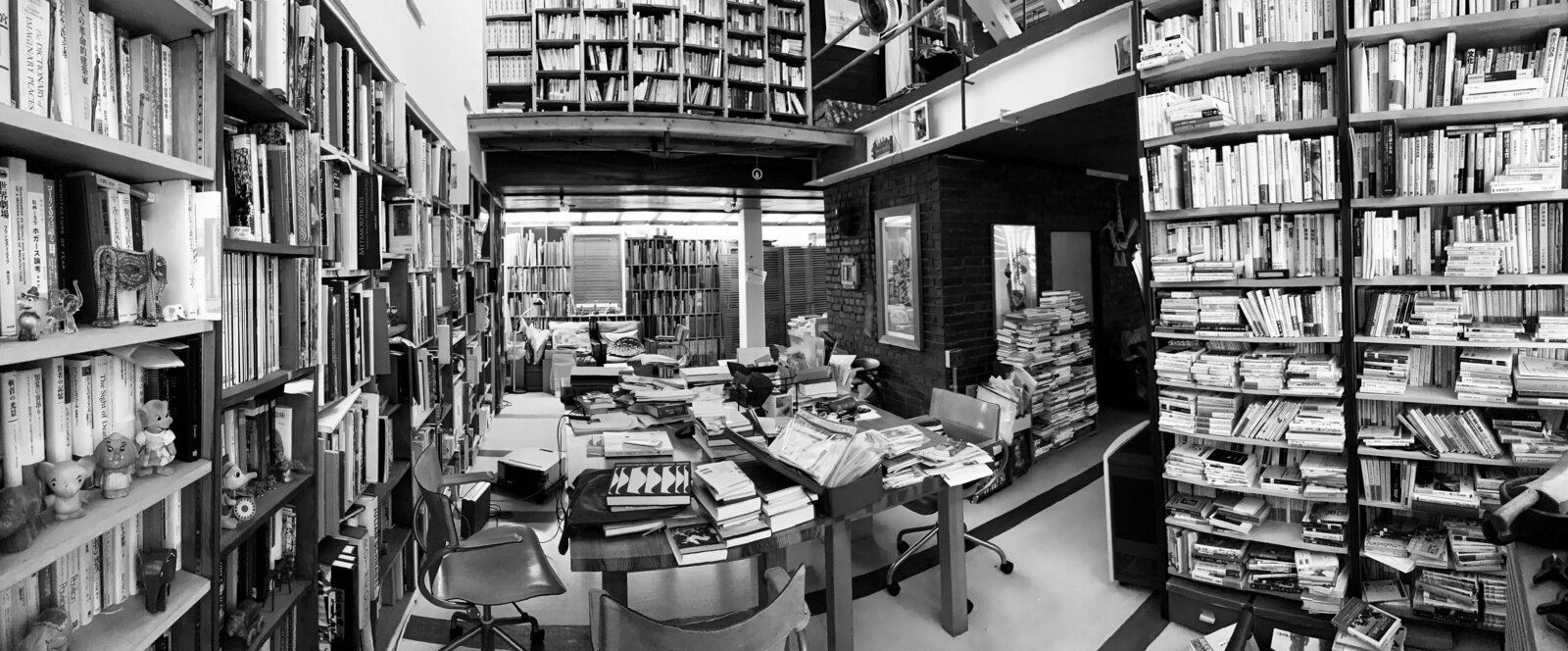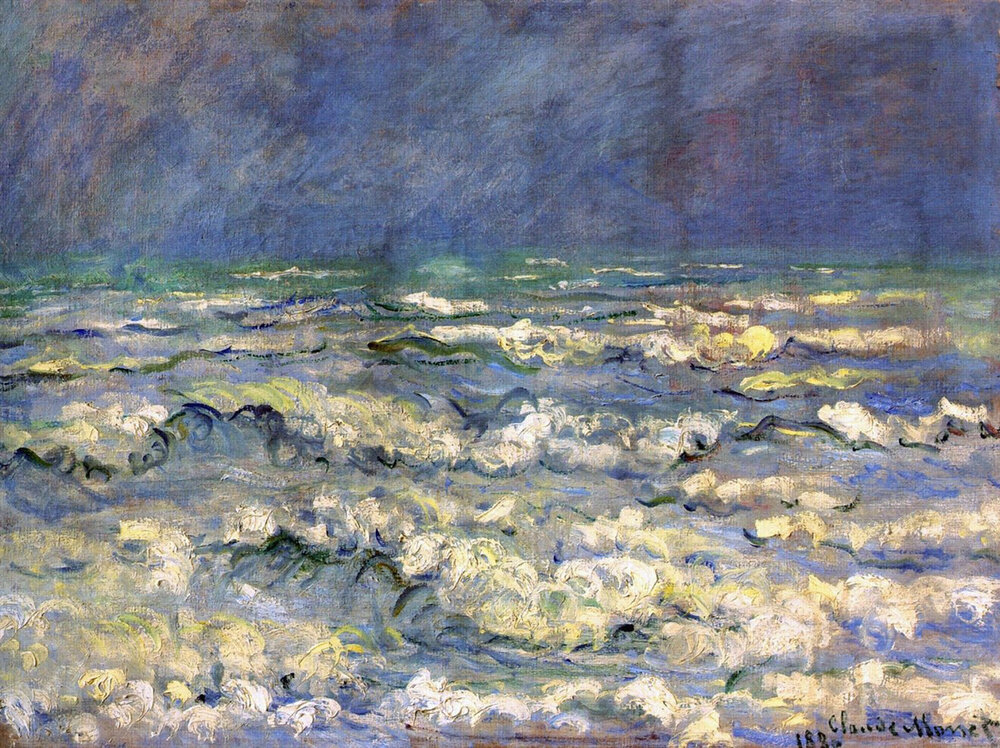Blum & Poe Broadcasts presents free and public access to scholarship and writerly ponderings from our publications archives and network.
In focus this week—an essay by Kenjirō Okazaki on his painting Open Sea, Stormy Weather/潮水の波、真水の滝 (2020), written on the occasion of Okazaki's forthcoming exhibition Topica Pictus / La Cienega, opening July 17, 2021 at Blum & Poe, Los Angeles.


Open Sea, Stormy Weather / Tidal water waves, freshwater falls
Fish falling from the sky. They are falling with the sea water. These fish were swallowed up to the sky by a tornado along with the seawater, and flew through the sky for a time as if they were swimming, drifting with the seawater. The tornado eventually scatter the fish and seawater on the ground as if projectile vomiting.

Acrylic on canvas
7 1/4 x 10 x 1 1/4 inches
怪奇現象のようにも知られるが、空と海の境を越えて移動できる水の運動能力を示す現象である。水に境界はない。そのはかり知れぬ怒涛のような勢いが龍と呼ばれてきた。
Just as some fish swim in the sky, aircrafts may occasionally fly through the ocean. In fact, a plane could not differentiate the top from the bottom once it loses sight in a storm. Rain does not always come from above, as it can rain horizontally and spit up from below. It can be dangerous to blindly move toward the light, as the light may not be shining from the sky. Less than a half century after the invention of the aircrafts, they were already superior to railroads and ships in terms of speed and freedom of navigation. But the aircraft had one weakness, which was against darkness. If there could not be flights at night, the aircraft's dominance would have been overturned. Planes could not dominate over the stability of the railway. At the time, it was still unpredictable when a storm or a fog may compromise flights at night.
Therefore a necessary part of the airline operation was to gamble and take risky flights in the dark. Saint-Exupery's "Night Flight" conveys the trepidation of a flight in a dark night. Once swallowed in a storm, all communication with the ground is severed and the aircraft propels into an alternate universe. Surrounded by the wind and rain with no visibility, one loses all sense of direction. It seems as if the aircraft becomes one with a dragon.
Crossing the river in the dark night meant a large gamble when there was no difference between the past and present, as well as east and west. Crossing the night’s river, people swallow muddy water and almost drown. When people cross (watatte) a river, they transform (kawatte). That is why Kiyoshiro (considered to be King of Rock in Japan) sings, "I've transformed." There is no way people do not transform after a flight at night. A person is reborn after being swallowed by a dragon.


The seawater swallowed by the sky inevitably falls from the sky as salt water.
If the water is evaporated and becomes clouds, it would fall from the sky as rain = fresh water. If salt water fell from the sky, it would feel like blood, sweat, or tears. If fresh water falls after salt water, one would feel purified as if everything is being washed off. Perhaps because of difficulty in differentiating fresh and salt water in paintings, painters have always wished to capture the exchange and rotation of water between the sea and the sky (which they may already been entangled with).



